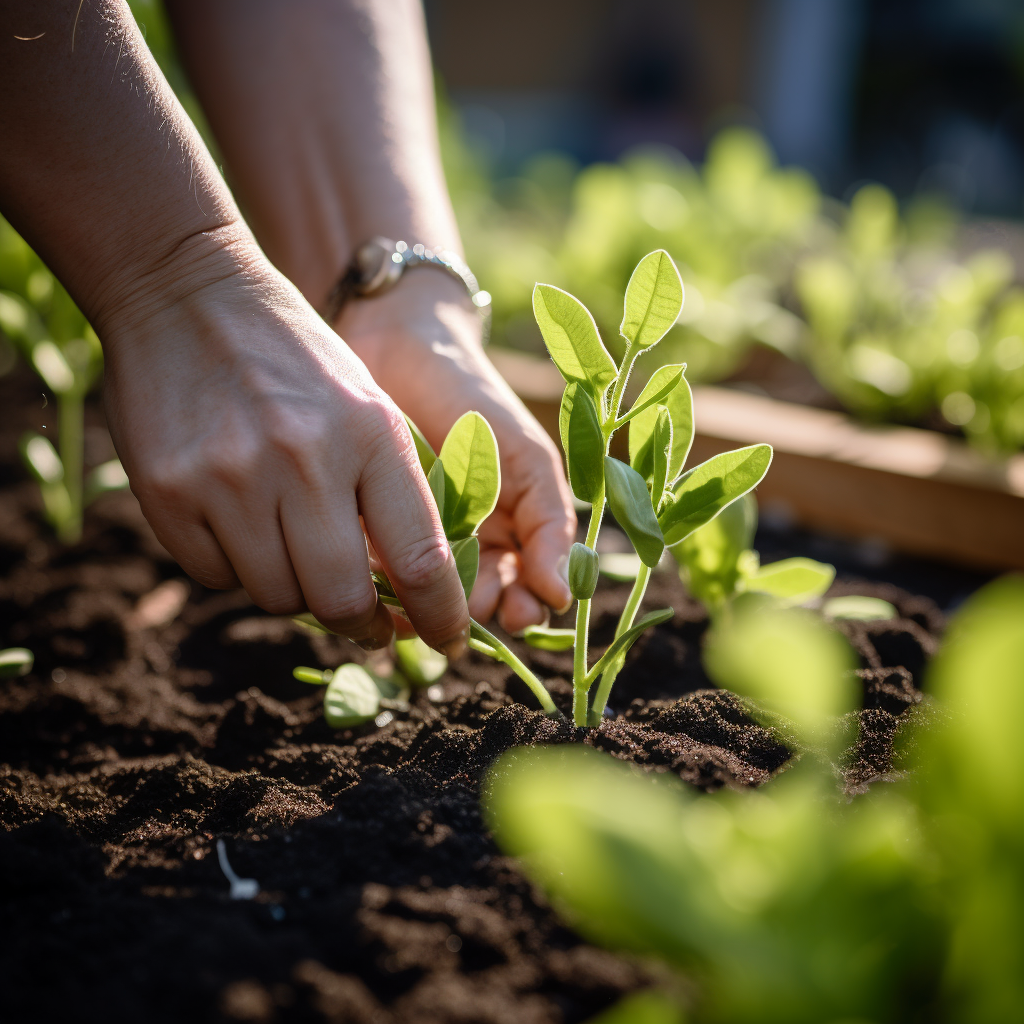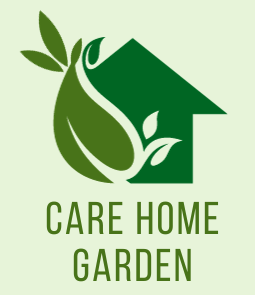
Edamame, known for its delightful buttery taste, serves as an easily cultivable crop within a home vegetable garden. Often referred to as young soybeans, these vibrant green pods yield two to three nutritious beans. While frozen edamame is available in stores, the fresh and vibrant flavor of homegrown edamame is unparalleled.
Reasons to Cultivate Edamame:
There are numerous compelling reasons to consider cultivating edamame. Notably, it’s a low-maintenance crop, sharing growing requirements akin to bush beans, making it an appealing choice for gardeners. Direct seeding simplifies the planting process, obviating the need for indoor seed starting. The plants yield bountiful harvests of fuzzy pods, each encapsulating two to three protein-rich beans.
This article delves into the nuances of ‘growing edamame,’ offering insights into its cultivation and best practices within a home gardening context. Highlighting the significance of this process is fundamental in understanding its relevance for gardening enthusiasts seeking a versatile and rewarding addition to their garden.
Benefits of Growing Edamame
Nutritional Value of Edamame:
Edamame boasts exceptional nutritional value, offering a rich source of protein and a delightful culinary versatility. These young soybeans, despite their inedible pods, present a creamy texture and a pea-like flavor. Their nutritional content, especially the protein, makes them a healthy and sought-after addition to one’s diet.
Ease of Cultivation and Low-Maintenance Crop:
The allure of growing edamame lies in its low-maintenance nature. Resembling the growing requirements of bush beans, it’s a hassle-free crop to cultivate. Its direct seeding process eliminates the complexities associated with indoor seed starting, making it an accessible option for both seasoned gardeners and newcomers to home gardening.
Diversity in Garden Suitability:
The adaptability of edamame plants extends to various garden types. Whether in containers, elevated planters, or traditional garden beds, these compact plants thrive in multiple environments, accommodating different garden spaces. Their compatibility with diverse garden settings makes them an ideal choice for gardeners with varying garden sizes and layouts.
Sustainability and Nutritional Abundance:
Apart from being an easy-to-grow crop, edamame presents a sustainable option in the garden. With productive plants yielding an abundance of protein-rich beans within fuzzy pods, it becomes an asset for those seeking a self-sufficient and nutritious addition to their homegrown produce.
Cultivating Edamame
Optimal Growing Conditions:
For successful edamame cultivation, the ideal planting time is late spring, ensuring a minimum of 6 hours of direct sunlight each day. These plants thrive in average fertile soil, benefitting from an inch of compost application before planting. In cases of poor soil quality, consider enriching the bed with a slow-release organic vegetable fertilizer, avoiding high nitrogen options to prevent adverse impacts on pod production.
Seed Treatment and Planting:
Boosting healthy plant growth and higher yields involves treating the seeds with a soybean-specific inoculant. This natural treatment aids in promoting robust plant growth and dense root formation. Planting edamame in garden beds, containers, or specialized growing systems, such as Vegepods, accommodates various garden space limitations. Seed placement at a depth of 1 to 1 1/2 inches and a spacing of 2 to 3 inches apart ensures favorable germination conditions.
Cold Climate Considerations:
Edamame, being a frost-tender vegetable, demands planting only after the threat of frost has subsided and the soil has warmed to at least 65°F (18°C). Pre-warming the soil using plastic covering facilitates early planting, avoiding soil rot concerns. The gardening calendar can be extended by planting a second crop 3 to 4 weeks after the initial planting, ensuring a prolonged harvest period.
Addressing Soil Moisture and Fertilization:
Maintaining proper soil moisture by consistent and deep watering, especially during dry spells, is essential for preventing yield reduction due to drought stress. Mulching the plants with straw or shredded leaves aids in moisture retention. Fertilizing the edamame plants 6 to 8 weeks after seeding using liquid organic fish or kelp fertilizer contributes to their nourishment and growth. The moderate-sized, compact plants generally grow to heights ranging from 18 to 30 inches, depending on the specific variety. These sturdy, bushy plants typically do not require staking for support and offer a beneficial function in shading the soil, reducing weed growth. Regular weed removal helps prevent competition for light, water, and nutrients, supporting healthy edamame plant growth.
Interested in what else you can grow? Check out our other guides!

Caring for Edamame Plants
Maintaining Soil Moisture:
Regularly monitoring soil moisture and ensuring consistent hydration is crucial for edamame plants. Adequate watering, especially during dry periods or when there’s been no rainfall, prevents drought-stressed plants, which could lead to reduced pod yield. Mulching the plants with straw or shredded leaves can aid in moisture retention, promoting a conducive environment for plant growth.
Fertilization Practices:
Boosting plant health and growth involves fertilizing edamame plants approximately 6 to 8 weeks post-seeding. The application of liquid organic fish or kelp fertilizer contributes essential nutrients to support the plants’ development and yield.
Plant Characteristics:
Edamame plants, ranging in height from 18 to 30 inches, exhibit a compact growth habit and are typically self-supporting, often not requiring staking. The dense foliage not only provides a natural means of supporting the plant but also helps in shading the soil, reducing weed growth. Regular weeding ensures that the edamame plants have minimal competition for light, water, and nutrients, ensuring optimal growth and productivity.
Pest and Disease Management:
Monitoring and addressing potential issues such as aphids, deer, and rabbits are vital in protecting edamame crops. Natural control measures like dislodging aphids with water or using physical barriers can help deter larger pests. For disease prevention, proper spacing, good air circulation, and abstaining from entering the patch during wet weather can mitigate concerns related to diseases like white mold and anthracnose stem blight. Employing a variety of protective methods helps safeguard the health of the edamame plants.
Harvesting and Consumption
Harvesting Guidelines:
Harvesting edamame requires attention to pod maturity. Pods are best picked when they reach 2 to 3 inches in length, appearing plump and vibrant green. Delayed harvesting might cause the pods to turn yellow, indicating overripeness. Pods are typically collected every day or two over a 2 to 3-week period. Gently snapping the pods off the plant using fingers or garden snips is the recommended method.
Post-Harvest Plant Management:
Instead of uprooting the edamame plants at the end of the season, trimming the stems at soil level allows the roots to break down, enriching the soil with atmospheric nitrogen. This act supports future crops by making vital nitrogen available in the garden.
Versatile Culinary Uses:
Enjoying homegrown edamame involves various culinary applications. The beans can serve as a delightful addition to meals or snacks. Commonly, pods are steamed or boiled for 4 to 5 minutes, creating a tasty and nutritious treat. After cooking, a dash of salt enhances the creamy and buttery flavor, making them a delectable addition to the dining table.
Preservation for Off-Season Enjoyment:
For winter use, surplus edamame can be frozen. Prior to freezing, blanch the pods in boiling salted water for 3 minutes and then transfer them to an ice bath. Once cooled, store them in freezer bags for later use. When ready to consume, a quick 4 to 5-minute steaming or boiling revives the frozen pods for a delightful off-season treat.
This section of the article elucidates the pivotal steps in harvesting edamame at the right time, optimizing their consumption, and techniques for preserving these delightful beans for off-season culinary pleasures.
Addressing Common Pests and Diseases
Pest Management:
Aphids: Aphids are a frequent concern for edamame plants. Combat them by dislodging these pests with a forceful jet of water from a garden hose. Encourage beneficial predatory insects by planting small-flowered varieties such as sweet alyssum and dill nearby.
Larger Pests: Protect the edamame crop from deer and rabbits by erecting a garden fence. Additionally, consider covering plants with insect netting or lightweight row covers to deter these animals from feeding on the plants.
Disease Prevention:
White Mold: Prevent the spread of white mold, particularly in cool and damp conditions, by ensuring proper plant spacing and practicing effective crop rotation. Additionally, avoid walking through the edamame patch during wet weather to minimize the likelihood of this disease.
Anthracnose Stem Blight: In warmer and wetter conditions, guard against anthracnose stem blight, which results in brownish blotches on plant stems. By maintaining proper plant spacing and minimizing moisture exposure, the risk of this disease can be reduced.
This section will address the common pests and diseases that can affect edamame plants, offering practical methods for pest control and disease prevention, ensuring a healthy and productive edamame harvest.

Recommended Edamame Varieties
Envy (75 days): An early maturing variety, Envy presents compact plants that reach about 2 feet in height. Ideal for small spaces, its buttery beans are highly regarded for their delicious flavor.
Chiba (75 days): Another early maturing variety, Chiba features upright plants growing up to 30 inches tall, yielding pods that contain three large green beans, around 2 1/2 inches in length.
Midori Giant (80 days): Known for its nutty flavored beans and large yields, Midori Giant matures relatively early. This variety bears pods with a high percentage containing three beans, while the plants reach a height of around 30 inches.
Jet Black (80 days): Distinguished by its unique thin black skins, Jet Black produces pods with great taste, typically containing 2 to 3 beans per pod. Plants of this variety grow to around 2 feet in height.
Shirofumi (80 days): A mid to late season variety, Shirofumi yields pods with 2 to 3 buttery beans, occasionally producing pods with four beans. Plants typically reach heights of 2 1/2 to 3 feet, offering a harvest window of 2 to 3 weeks.

Cat-Friendly Gardening: Creating a Safe Haven for Your Feline Friends
Table of Contents Introduction Hey there, fellow feline enthusiasts! 🐾 Welcome to a space where your garden becomes not just a patch of green but

From Lilies to Sago Palms: Protect Your Cat from These 10 Toxic Plants
Table of Contents Introduction: Keeping Your Furry Friend Safe from Toxic Plants Hey there, fellow cat lovers! We all know our feline companions can be

Cat Nutrition 101: Decoding Labels & Essential Nutrients A-Z!
Table of Contents Introduction As a cat owner, you want nothing but the best for your furry feline friend. And that includes providing them with
